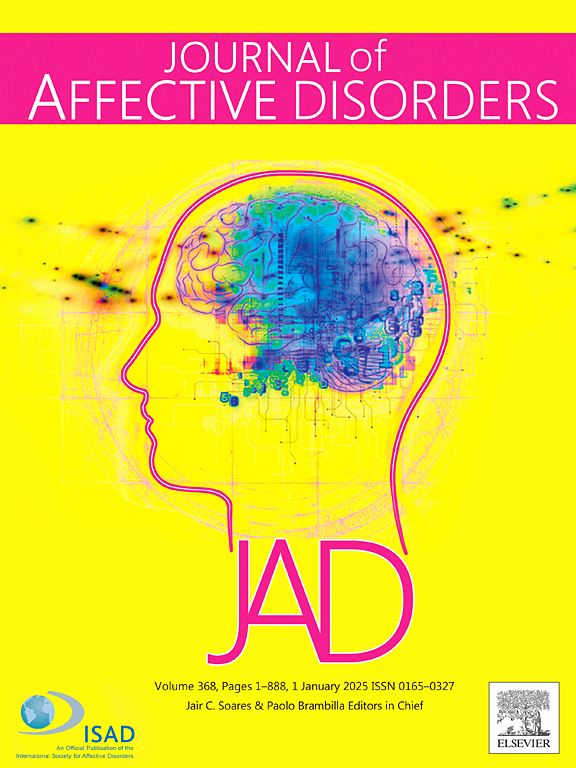Social isolation and depressive symptoms among older adults with different functional status in China: A latent class analysis
IF 4.9
2区 医学
Q1 CLINICAL NEUROLOGY
引用次数: 0
Abstract
Background
Social isolation is considered a risk factor for depression in older adults. Since there may be heterogeneity in the experience of social isolation, we aimed to investigate social isolation patterns and their association with depressive symptoms, for older adults with different functional status separately.
Methods
This study used data from the fifth wave of the China Health and Retirement Longitudinal Study (CHARLS). A total of 8262 participants, defined as older adults aged 60 years and above, were included in the analysis, comprising 49.9 % (n = 4124) men and 50.1 % (n = 4138) women. Latent class analysis was conducted to identify social isolation patterns. Binary logistic regression was used to estimate the association between latent classes and depressive symptoms.
Results
Two distinct classes were identified in participants with functional dependency and three classes were identified in participants without functional dependency. The severely isolated with minimal family and social contact group was associated with a higher risk of depressive symptoms in both subgroups (participants with functional dependency: OR = 1.319, 95%CI: 1.032–1.686; participants without functional dependency: OR = 1.537, 95%CI: 1.209–1.953). No difference was found in the risk of depressive symptoms between the moderately isolated with family contact group and the low isolated group among participants without functional dependency (OR = 1.020, 95%CI: 0.83–1.252).
Conclusion
Risk of depressive symptoms varies with different social isolation patterns among older people with different functional status.
求助全文
约1分钟内获得全文
求助全文
来源期刊

Journal of affective disorders
医学-精神病学
CiteScore
10.90
自引率
6.10%
发文量
1319
审稿时长
9.3 weeks
期刊介绍:
The Journal of Affective Disorders publishes papers concerned with affective disorders in the widest sense: depression, mania, mood spectrum, emotions and personality, anxiety and stress. It is interdisciplinary and aims to bring together different approaches for a diverse readership. Top quality papers will be accepted dealing with any aspect of affective disorders, including neuroimaging, cognitive neurosciences, genetics, molecular biology, experimental and clinical neurosciences, pharmacology, neuroimmunoendocrinology, intervention and treatment trials.
 求助内容:
求助内容: 应助结果提醒方式:
应助结果提醒方式:


